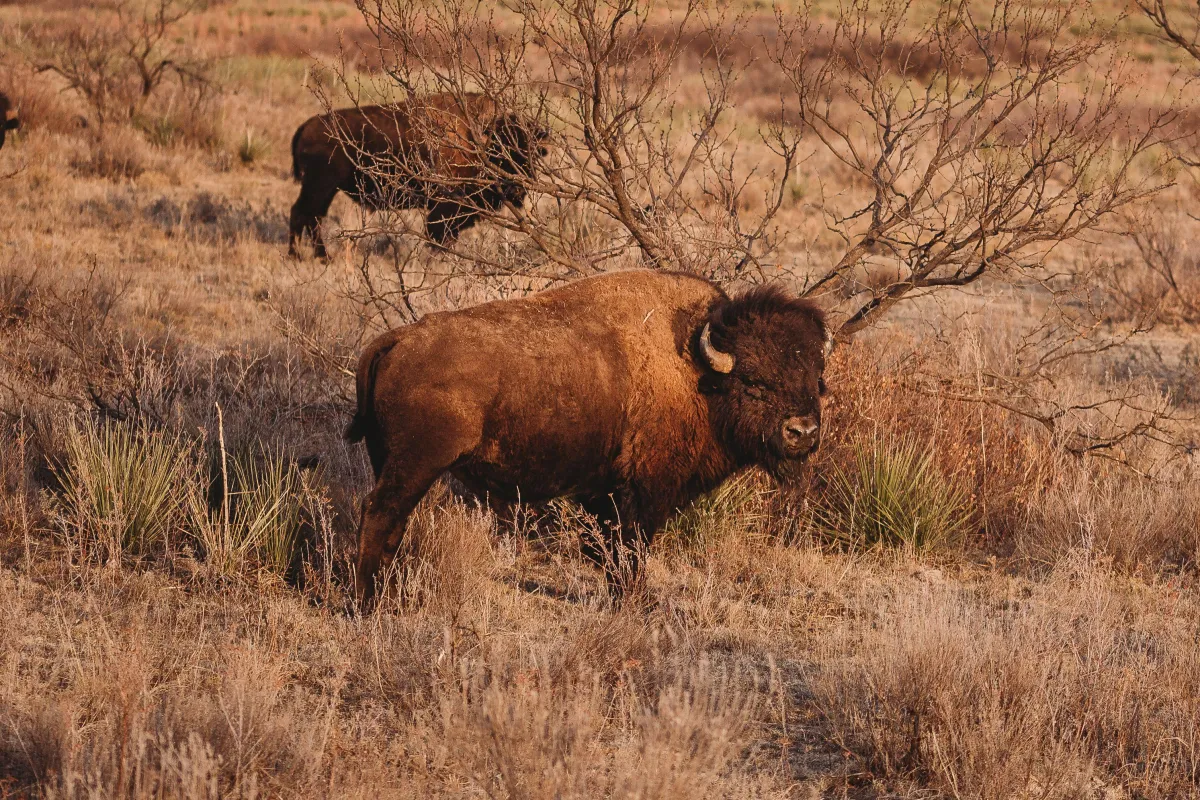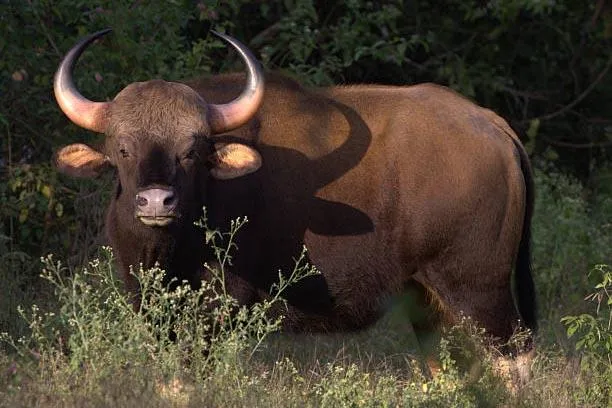American Bison
The American bison has a long and varied history in the United States.
About 150 years ago, nearly 30 million bison roamed the Great Plains until a mass slaughter began in the early 1800s. By the late 1880s, fewer than 1,000 bison remained.
Bison, a keystone species, help create habitat on the Great Plains for many different species, including grassland birds and even many plant species. As bison forage, they aerate the soil with their hooves, which aids in plant growth, and disperse native seeds, helping to maintain a healthy and balanced ecosystem.
Over the last decade, the conservation community has contributed significantly to bison conservation, helping to bring back America’s national mammal. Because there are no longer millions of animals migrating across the plains, the bison is considered ecologically extinct but conservation herds of 1,000 or more bison are being established to create a metapopulation, allowing for the species to once again play an important ecological role on our prairie grasslands.
American Bison v. European Bison
The American and European bison are very similar animals but do have a few small differences.
For starters, American and European bison are animals that live in slightly different habitats. The former tend to roam in open plains and mountain regions while the latter congregate in woody forests. Behaviorally, American plains bison are easier to domesticate than European wood bison.
Additionally, American bison fur is typically longer than its European counterpart. However, European bison’s tails are hairier than American bison’s tails. Additionally, American bison tend to grave and eat low-lying vegetation and grass. European ones, on the other hand, are browsers, which means they feed mostly on leaves, shoots, and hanging fruits.
European and American bison also have small anatomical differences. American ones have 15 ribs and European ones only 14. American buffalo have four lower spine discs while their European counterparts have five. Lastly, European bison have slightly longer legs and necks than their American cousins.

American Bison

